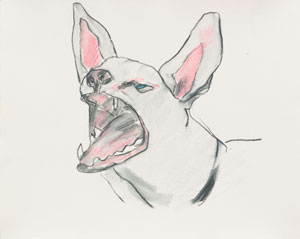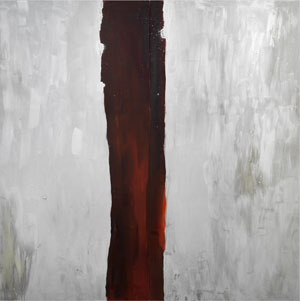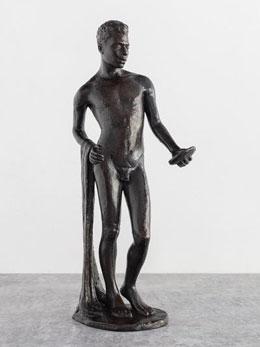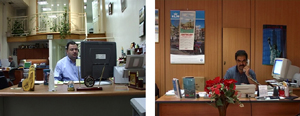5.31.24 — The Feel of Paper
Joan Jonas speaks of wanting to capture “the shape, the scent, the feel of things.” If that suggests a raw immediacy, she works fast.
The Drawing Center fills all three of its galleries with some three hundred works, chosen from more than two thousand. Is even that a mere preface to her retrospective at MoMA? It is a challenge to Jonas herself to keep up with the pace of things. These are not simply things observed or the things in themselves,  but things for both her senses and as they appear to themselves. They ask what drawing can still mean to an artist known not for so-called fine art, but for video, installation, and performance.
but things for both her senses and as they appear to themselves. They ask what drawing can still mean to an artist known not for so-called fine art, but for video, installation, and performance.
Drawings for Jonas sure look immediate, like the wild shape of things. Her line may seem barely to hold together, and so might a recognizable living creature. She calls her show “Animal Vegetable Mineral,” through June 2, and animals by far win out. What could that have to do with new media? What about an artist who has lived in Soho for fifty years, just up the street from the Drawing Center today? “I know,” she insists, “what is around me”—which may sound more like boutiques, warehouses, and cobblestones than nature.
Still, performance for Jonas has always meant experiencing her surroundings, going back to Wind in 1968. And the Drawing Center brings a more recent video of two women, one of them the artist, walking by the sea. Their paths cross as they hold out a paper cone, like a makeshift megaphone or telescope, but without a sign of communication or recognition. One can see what she means by an art of “incurable solitude.” It is also art with a sense of humor and experiment. Whatever it takes to see or fail to see.
She has summered in Nova Scotia, collecting rocks from the Canadian wilds, and a table holds its share. (She began as a sculptor, and one might hope for hints to her early work, but good luck with that.) She keeps looking, too, with the same ambiguity as to whether she is looking for nature or herself. Her drawings turn to butterflies and bees, seen up close, rendered in ink on paper folded in half. It brings out their symmetry, but also her love of accident. The back of a bee could just as well be an animal’s spine or its gaping black maw.
The curators, Laura Hoptman with Rebecca DiGiovanna, take things not chronologically but in series. They can hardly help it, not with a series of thirty-seven dogs or forty-seven birds. It is a human creation all the same. Dogs are domestic animals, and the rest could belong to the artist’s backyard or her imagination. She has drawn fish “as they are in the sea,” but how would she know without imagination? She has sketched snowflakes, but they have already melted away.
They have a life of themselves all the same. A series for Jonas is not so much variations on a theme as a focus of attention. It also has its impetus in her media. What begins as wild freehand may not stay that way, and what looks immediate may be anything but. It may run to a single intricate loop in response to traditional Irish patterning—what a video calls Mystic Knots. It may also run to chance.
She has her Rorschach tests, in folded paper or melting ice. She has worked with a twig dipped in ink and made puppets from photocopies. Like David Hammons or Yves Klein, she has made art from the traces of a human body, her own or another woman’s—on paper and in performance. It can be hard to know one subject, human or animal, from another. The show opens with faces in profile, with more dips and turns than needed for just a nose and a mouth. Who, though, can say in advance the shape of things?
Did I say that The Shape, the Scent, the Feel of Things is also the title of a video? I turn soon, I promise, to her MoMA retrospective.
Read more, now in a feature-length article on this site.


